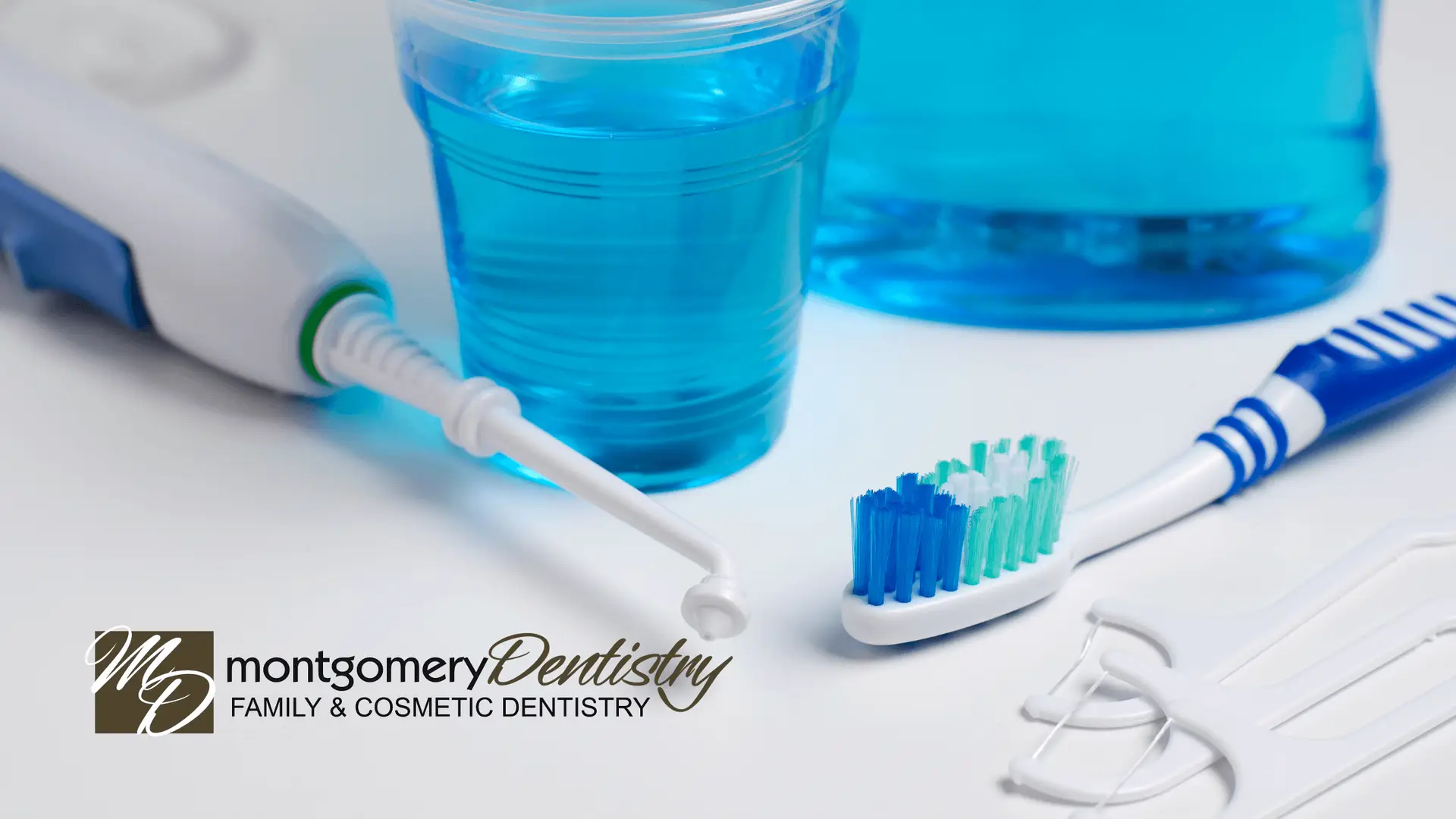We’re sure you have your own personalized routine for taking care of your oral health, but you might be skipping out on one or more important steps! Maintaining your dental hygiene is an ongoing process, and it requires consistency and care. Here’s a general timeline of what a typical dental hygiene routine should look like.
Daily Floss.
Flossing is an essential part of any basic dental hygiene routine. Lots of people tend to floss after brushing their teeth, but it’s actually more effective to floss before you brush. This allows you to easily brush away any food or plaque that was loosened up while flossing. If you gently floss on a regular basis, you’re less likely to develop gum disease and more likely to have good oral health overall.
Brush your teeth.
Brushing your teeth on a daily basis is extremely important when it comes to maintaining good dental hygiene. In fact, you should brush your teeth with a fluoride toothpaste at least twice per day for two full minutes each time when possible. The American Dental Association (ADA) recommends waiting about an hour after a meal before brushing, especially if you eat something particularly acidic.
Brush your tongue.
Don’t forget to brush your tongue once you’re done brushing your pearly whites! This is a simple step in your dental hygiene routine that can make all the difference. If you skip out on brushing your tongue, bacteria will build up on the surface and crevices, which could result in bad breath or more severe dental health issues down the road.
Rinse with mouthwash after brushing.
Rinsing with mouthwash after you brush your teeth and tongue is a great supplemental step to incorporate into your dental hygiene routine. The ADA suggests using a therapeutic mouth rinse with ingredients like fluoride and peroxide that work to kill bacteria. If you make a habit of using mouthwash after thoroughly brushing your teeth and tongue, you’re less likely to deal with bad breath and may even reduce your chances of developing tooth decay. Just make sure not to swallow large amounts of mouthwash– it could lead to potentially dangerous side effects.
P.S. Children under 6 should not use mouthwash! Their swallowing reflexes may not be well developed, making it hard for them to spit the mouthwash out rather than swallow it.
Quarterly (Every 3-4 Months)
Switch to a new toothbrush.
Once your toothbrush starts showing obvious signs of wear like frayed bristles or a faded handle, it’s time to get a new one. For most people, this rolls around every three to four months. After you get your new toothbrush, make sure to properly take care of it if you want it to last as long as possible. This includes rinsing it after each use, allowing it to dry between uses, and deep cleaning it as needed.
Semiannually (Every 6 Months)
Visit your dentist for regular cleaning.
Even if you aren’t experiencing any noticeable dental problems, it’s still important to visit your dentist every six months for a routine cleaning and a comprehensive oral exam. This gives your dentist a chance to catch any small issues before they become bigger problems, and it keeps your teeth and gums in good shape year-round.
Ongoing
Drink water after meals.
Try making it a habit to wash each meal down with a glass of water. Not only will you stay hydrated, but you’ll also get rid of any lingering food that could lead to bacteria growth and plaque. Drinking water with fluoride at any time of day is also great for your teeth because it helps strengthen the enamel, which limits the potential for cavities.
Monitor the levels of sugars, carbohydrates, and acids in your diet.
You shouldn’t be overly concerned about this if you have a generally well-balanced diet, but it doesn’t hurt to keep an eye on what you’re eating and how it affects your teeth and gums. If your diet is extremely high in sugars and carbohydrates, you might be at risk for developing cavities due to a buildup of bacteria and plaque. A diet that’s extremely high in acids could also wear down your tooth enamel and increase your chances of developing cavities.
Keep an eye out for potential problems.
It’s never a bad idea to monitor your oral health on a regular basis and stay on the lookout for anything that looks or feels problematic. As soon as you think you might have a dental issue, go ahead and schedule an appointment with your dentist so they can take a look and determine how to address the problem. The earlier they can catch a potential issue, the better.
Need a little help establishing your dental hygiene routine? Ready to schedule your semiannual cleaning? Call Montgomery Dentistry today at (334) 279-0760!
About the Author
-

Dr. Jay L. Robertson
Dr. Jay Robertson joined our practice in July 2008. He is from Montgomery and is a graduate of Saint James School, Birmingham-Southern College, and the University of Alabama, Birmingham School of Dentistry. He is a member of the American Dental Association, the Alabama Dental Association and the Academy of General Dentistry.
Dr. Robertson and his wife Jennifer have four children, John Campbell, Julian, Lowe, and Ansley.
Dr. Robertson serves on the board of the Montgomery Quarterback Club and is a member of the First United Methodist Church of Montgomery. When not at work, Dr. Robertson enjoys all things sports, including Auburn, golf, and his children’s various sports.
